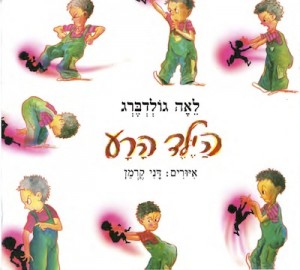by Charlene Klassen Endrizzi, Westminster College, New Wilmington, PA
“Excellent literature educates… What makes it ‘educational’ is its
deep human content offered in an excellent artistic form.”
-Israeli children’s author, Miriam Roth, 1969.
 During a recent trip to the Middle East, I set out to explore books Israeli parents share with their children. This journey grew out of a cross-cultural research project involving Israeli and American mothers reading to their Kindergarten children. I wanted to understand some of the books my research partner, Vered Vaknin-Nusbaum, plans to share with Jewish, Druze and Muslim families. My book informants included Vered, two colleagues from her college, Hagit and Yehuda, and three other Israelis, Sima, Janet and Britt. In the midst of excursions to various bookstores, these parents regaled me with literacy stories, thus deepening my understanding of the role of children’s books in their family lives.
During a recent trip to the Middle East, I set out to explore books Israeli parents share with their children. This journey grew out of a cross-cultural research project involving Israeli and American mothers reading to their Kindergarten children. I wanted to understand some of the books my research partner, Vered Vaknin-Nusbaum, plans to share with Jewish, Druze and Muslim families. My book informants included Vered, two colleagues from her college, Hagit and Yehuda, and three other Israelis, Sima, Janet and Britt. In the midst of excursions to various bookstores, these parents regaled me with literacy stories, thus deepening my understanding of the role of children’s books in their family lives.
Continue reading →
 As we wind up Banned Books Week (September 30-October 6, 2012), I found myself wondering about children’s books banned and/or challenged in other countries, and thus began searching for titles. I knew Journey to Jo’burg had been banned in South Africa, so I decide Beverly Naidoo and her first novel would be my first step in investigating banned/challenged children’s literature world-wide.
As we wind up Banned Books Week (September 30-October 6, 2012), I found myself wondering about children’s books banned and/or challenged in other countries, and thus began searching for titles. I knew Journey to Jo’burg had been banned in South Africa, so I decide Beverly Naidoo and her first novel would be my first step in investigating banned/challenged children’s literature world-wide.









